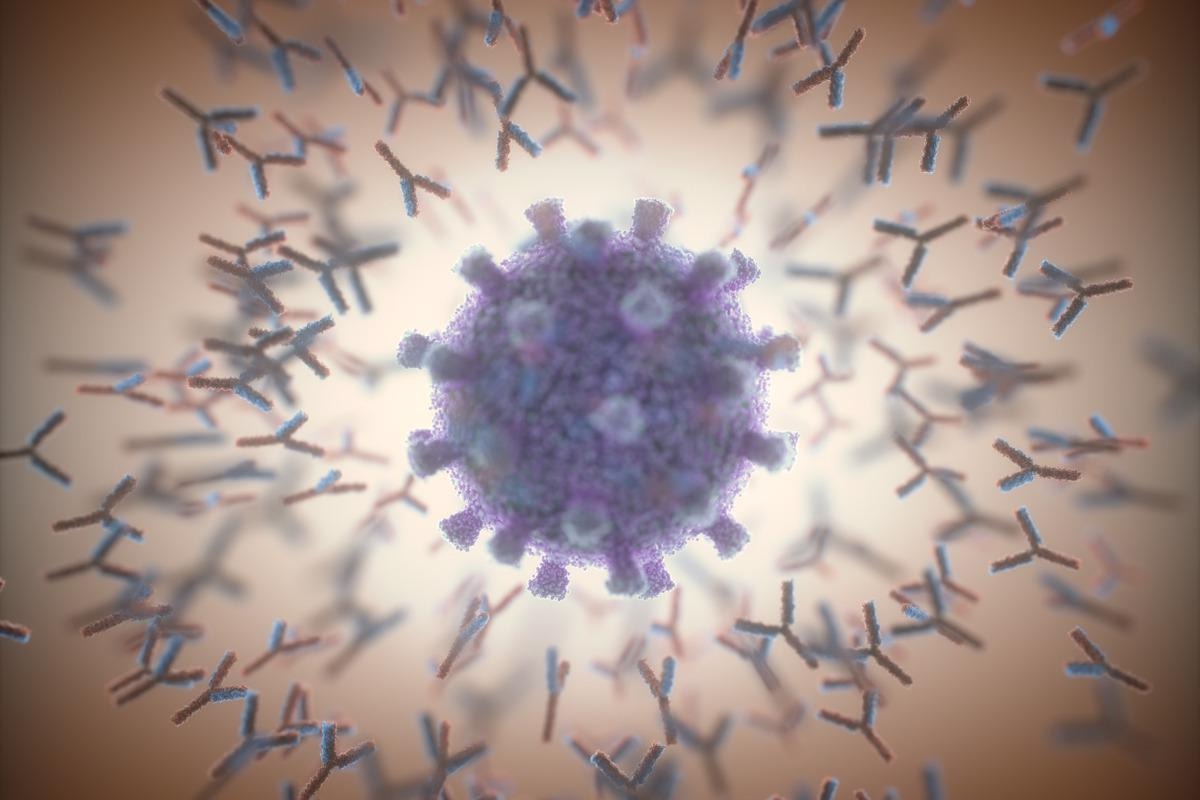The severe acute respiratory syndrome coronavirus 2 (SARS-2) led to a worldwide outbreak of coronavirus disease 2019 (COVID-19), with over six million deaths from over 448 million cases of infection. This spurred the rapid development of vaccines within a year of the outbreak, which were rolled out on a massive scale in many developed and developing countries, in a bid to end the pandemic and enable a return to normalcy.
 Study: Rationally designed immunogens enable immune focusing following SARS-CoV-2 spike imprinting. Image Credit: ktsdesign/Shutterstock
Study: Rationally designed immunogens enable immune focusing following SARS-CoV-2 spike imprinting. Image Credit: ktsdesign/Shutterstock
However, the emergence of new variants with escape mutations threw a wrench into these plans. The search for conserved epitopes that would not suffer mutation due to their centrality to viral replication began.
A new paper in Cell Reports describes a novel approach whereby SARS-2 antigens were analyzed for conserved sites that may be targeted by broadly neutralizing antibodies that will confer immunity to other Sarbecoviruses, especially to other coronaviruses, as well.
Introduction
The viral spike glycoprotein is the immunodominant antigen, especially the receptor-binding domain (RBD) containing the receptor-binding motif (RBM), that interacts with the host cell receptor, the angiotensin-converting enzyme 2 (ACE2). Many of the currently identified potent neutralizing antibodies (nAbs) are directed against the RBM, preventing ACE2 binding to SARS-2 as well as to related coronaviruses.
The RBM contains largely varying regions, with some conserved portions. There are other RBD epitopes outside the RBM that are highly conserved across the Sarbecoviruses, and across the new variants of SARS-CoV-2. The aim of the scientists in this study was to use rational immunogen design strategies, since “directing the immune response to these conserved sites may reduce the likelihood of viral escape and lead to more broadly protective responses.”
Such strategies include masking epitopes by altering the putative N-glycosylation sites (PNGs), as well as epitope scaffolding to selectively present broadly protective epitopes. Multimerized SARS-2 or other coronavirus RBDs are highly immunogenic, and must be tested in heterologous prime/boost regimens in organisms previously infected or exposed to the SARS-2.
A phenomenon called imprinting has been described in immunology, whereby the organism produces an immune response that is biased towards the earliest strain to which it was exposed, failing to vary the antibodies as the antigen undergoes mutational variation. This allows immune escape via mutations. Thus, this “original antigenic sin” can be harmful to the adaptive immune response.
Engineering the immunogen
The current study used both means: the RBD glycosylation level was enhanced, while the RBM from the SARS-2 was engineered onto a heterologous scaffold derived from other coronaviruses – called “resurfacing”. The RBDs of SARS-1 and the related WIV1 were successfully engrafted with the SARS-2 RBM, which requires a scaffold to bind the ACE2 or SARS-2-specific antibodies, because of its conformational flexibility.
The effect of resurfacing, namely, exposure to resurfaced (rs)SARS-1 and rsWIV1, was retained binding to the SARS-2-RBM-specific antibody B38, and efficient ACE2 binding. Using coronaviruses that use the same receptor for binding, as in this case, offers an approach to overcome the sequence and structural constraints on the RBD for successful engraftment of the RBM of another virus.
Glycan engineering was then employed to mask the conserved epitopes that show cross-reactive binding to the epitopes common to SARS-1, SARS-2 and WIV1 RBDs, encouraging antibodies to the RBM to be generated instead. Conserved PNGs were added to the wildtype SARS-2, rsSARS-1 and rsWIV1 RBDs.
The hyperglycosylated constructs were expressed in mammalian cells to ensure that the glycosylation was properly carried out, resulting in glycan shielding. While there was a two-fold decrease in binding affinity for B38, this is insignificant, and allows for efficient interaction with ACE2.
The engineered construct rsSARS-2 did not bind to non-RBM RBD-specific cross-reactive antibodies S309 and CR3022, indicating that antibodies to this immunogen would focus on the RBM. To ensure this happened with rsSARS-1 and rsWIV1 also, specific mutations were incorporated to increase the antigenic difference between the various scaffolding RBDs.
An immunologically silent trimerization tag was added to the construct to enhance the avidity of binding. A booster dose of vaccine was given with these immunogens so as to redirect the focus of the immune response away from the originally imprinted antigen.
Robust response to SARS-2 RBM
The results showed a robust antibody response to the wildtype SARS-2 RBD, but not to the masked glycosylated construct. The engineered mutations and hyperglycosylation muted the immune responses to the conserved epitopes outside the RBM, enhancing the focus on the SARS-2 RBM.
Only the cocktail of wild-type SARS-1, SARS-2, and WIV1 RBD trimers (“Trivalent cohort”) was efficient at focusing the immune response on non-RBM epitopes on the SARS-2 RBD, probably because of the imprinting effect of the priming SARS-2 spike vaccine. This reflects earlier data showing that neutralizing capacity is much lower against related Sarbecoviruses than SARS-2 after early exposure to the latter.
Focusing on RBM or outside-RBM epitopes
In a mouse model, already exposed to SARS-2 spike, the use of these engineered immunogens to boost the immune response led to a refocused antibody response targeting either the RBM or epitopes outside the RBM. The former bound to epitopes that were highly conserved among Sarbecoviruses related to SARS-2. Conversely, using nanoparticles to multimerize the engineered immunogen failed to enhance the immune-focusing or the immunogenicity.
The antibodies directed to the RBM had potent neutralizing activity against SARS-2 variants and other coronaviruses, while retaining high neutralizing potency against the wildtype SARS-2. Thus, this RBM-focused response provided effective protection against SARS-2 infection in mice.
Broadly neutralizing antibodies
When the resulting antibodies were isolated and structurally characterized, they were found to include a class of broadly neutralizing sarbecovirus antibodies.
Conclusion
Our data show how rationally designed immunogens can redirect immune responses to conserved coronavirus epitopes in the context of preexisting immunity. These results could inform next generation coronavirus vaccines.”
In fact, other viruses could also be the subject of similar vaccine studies.